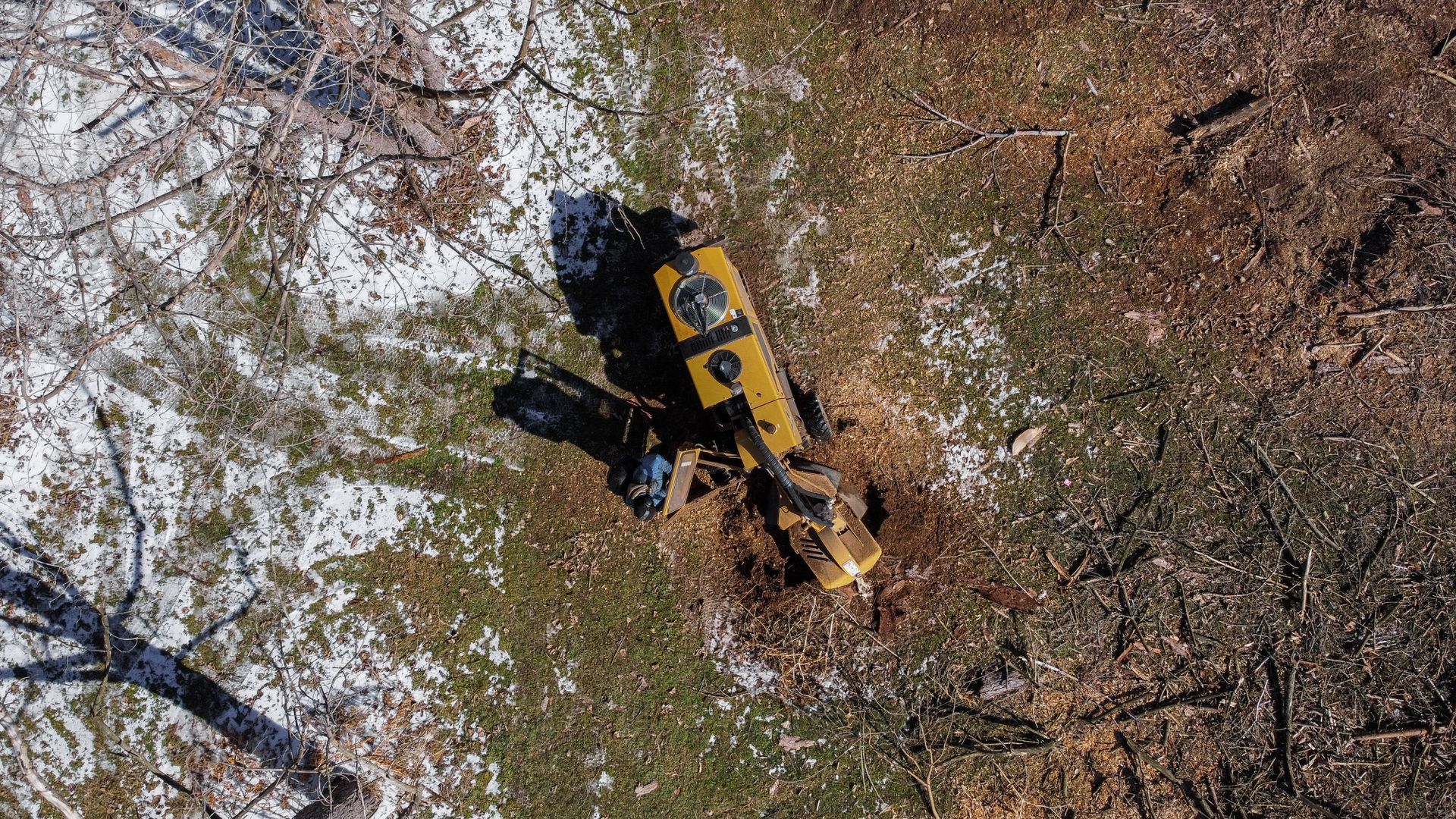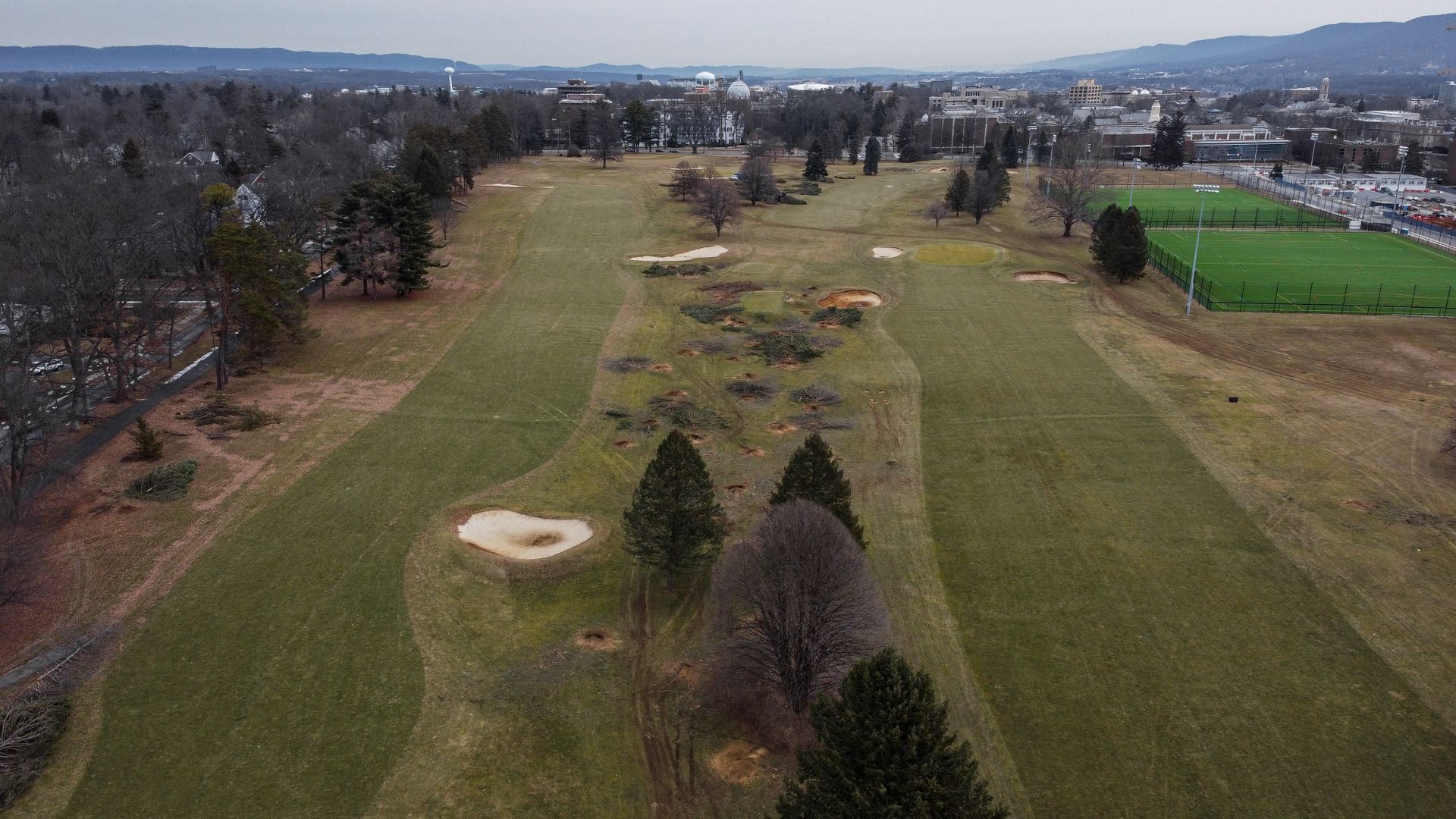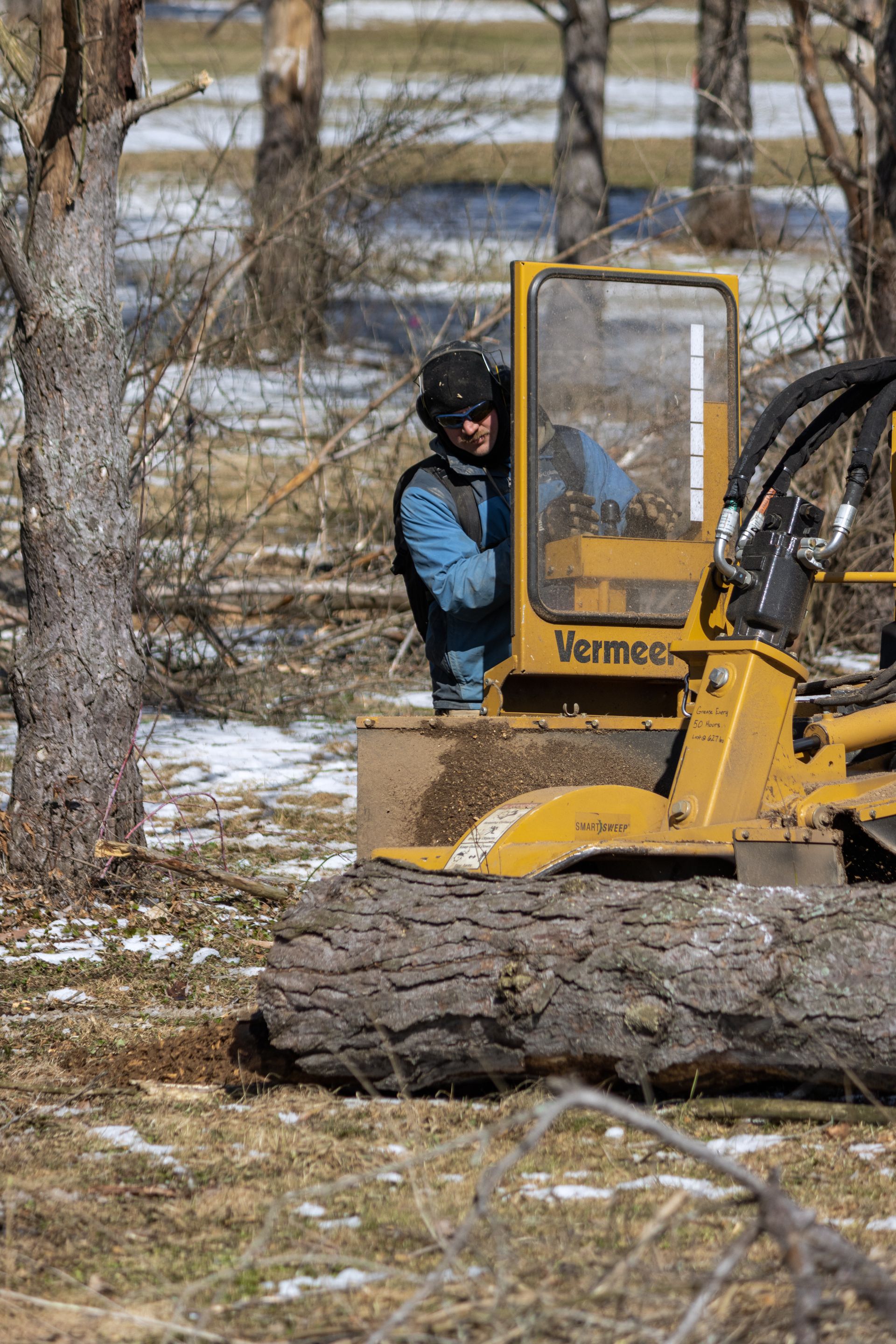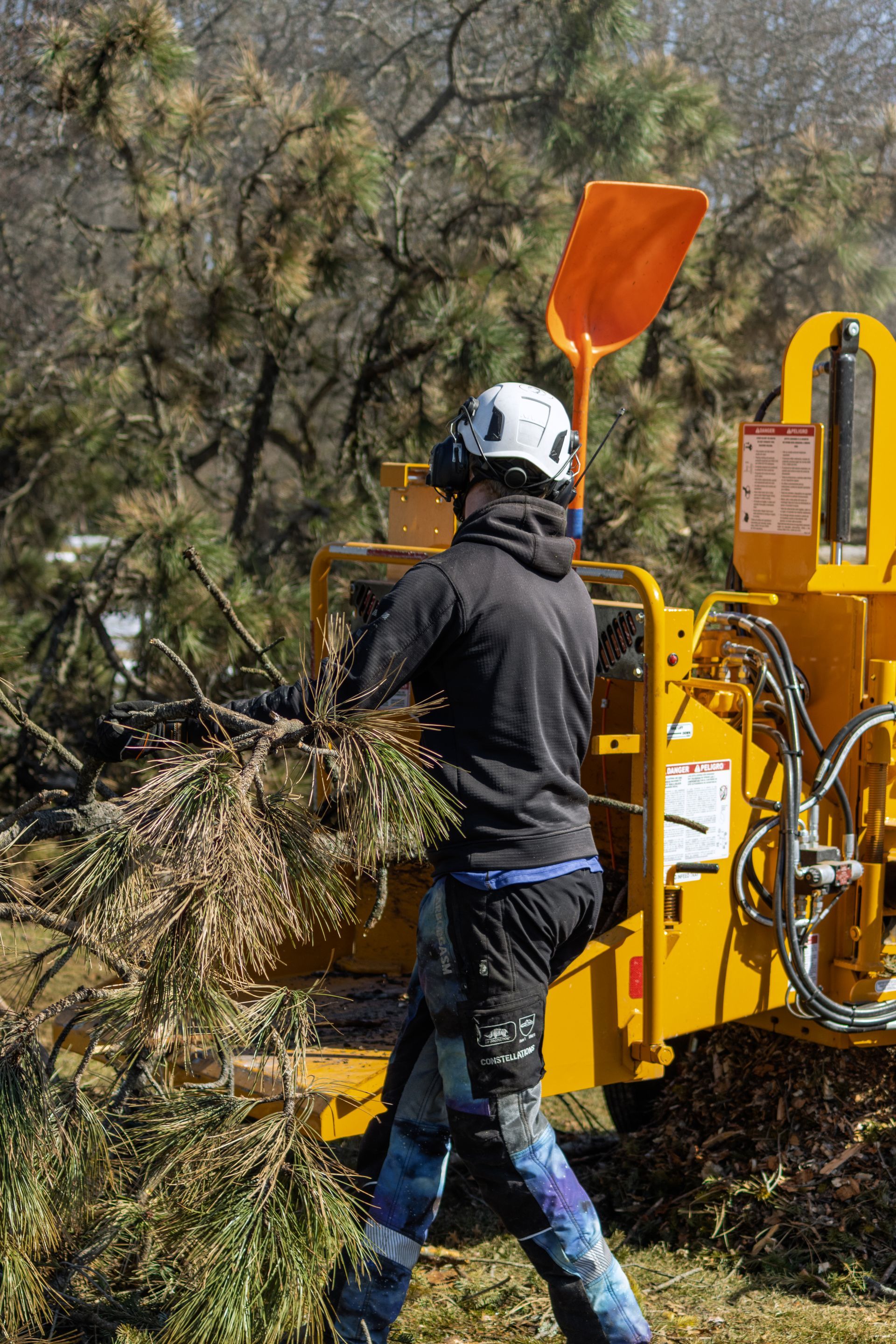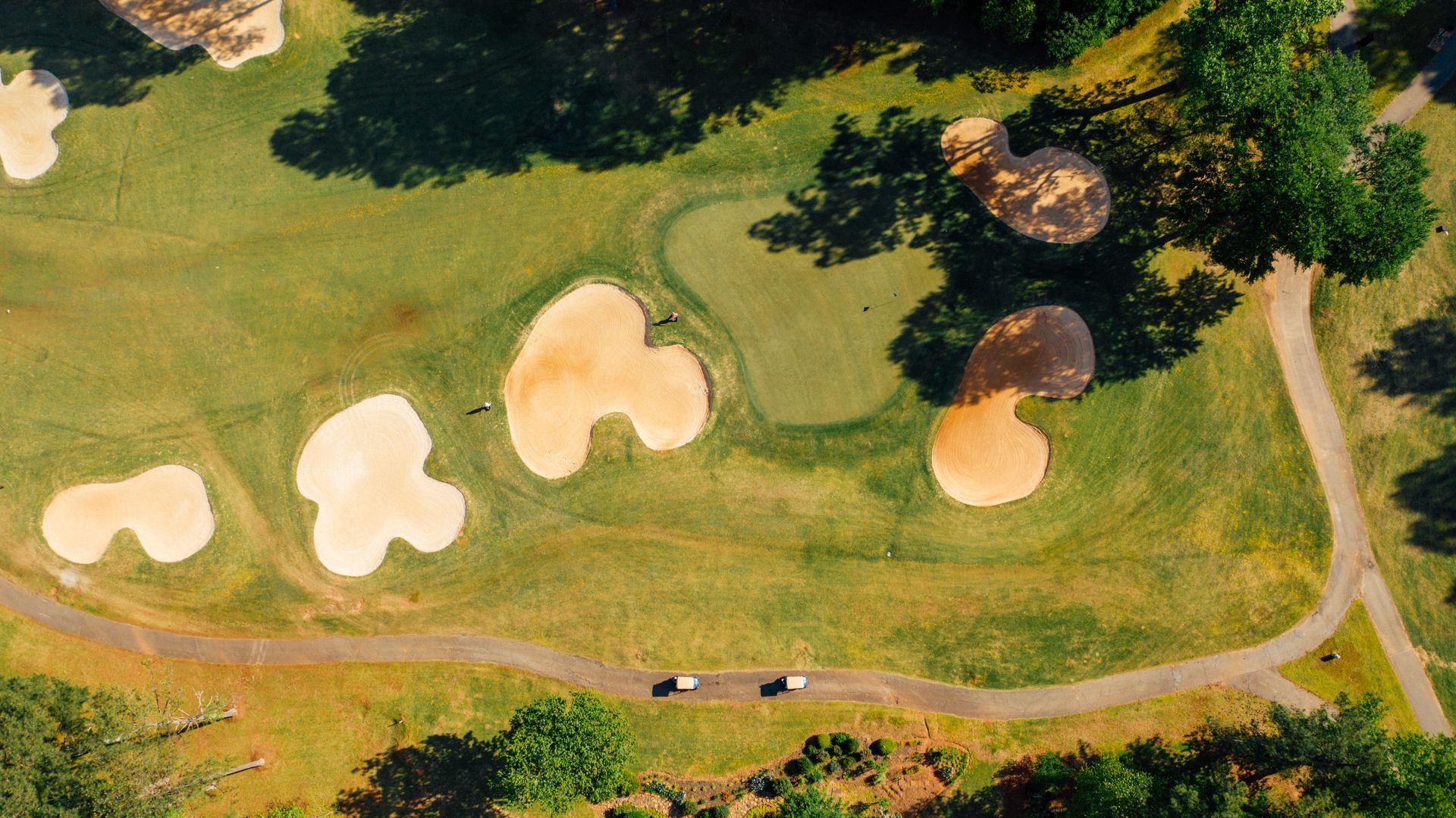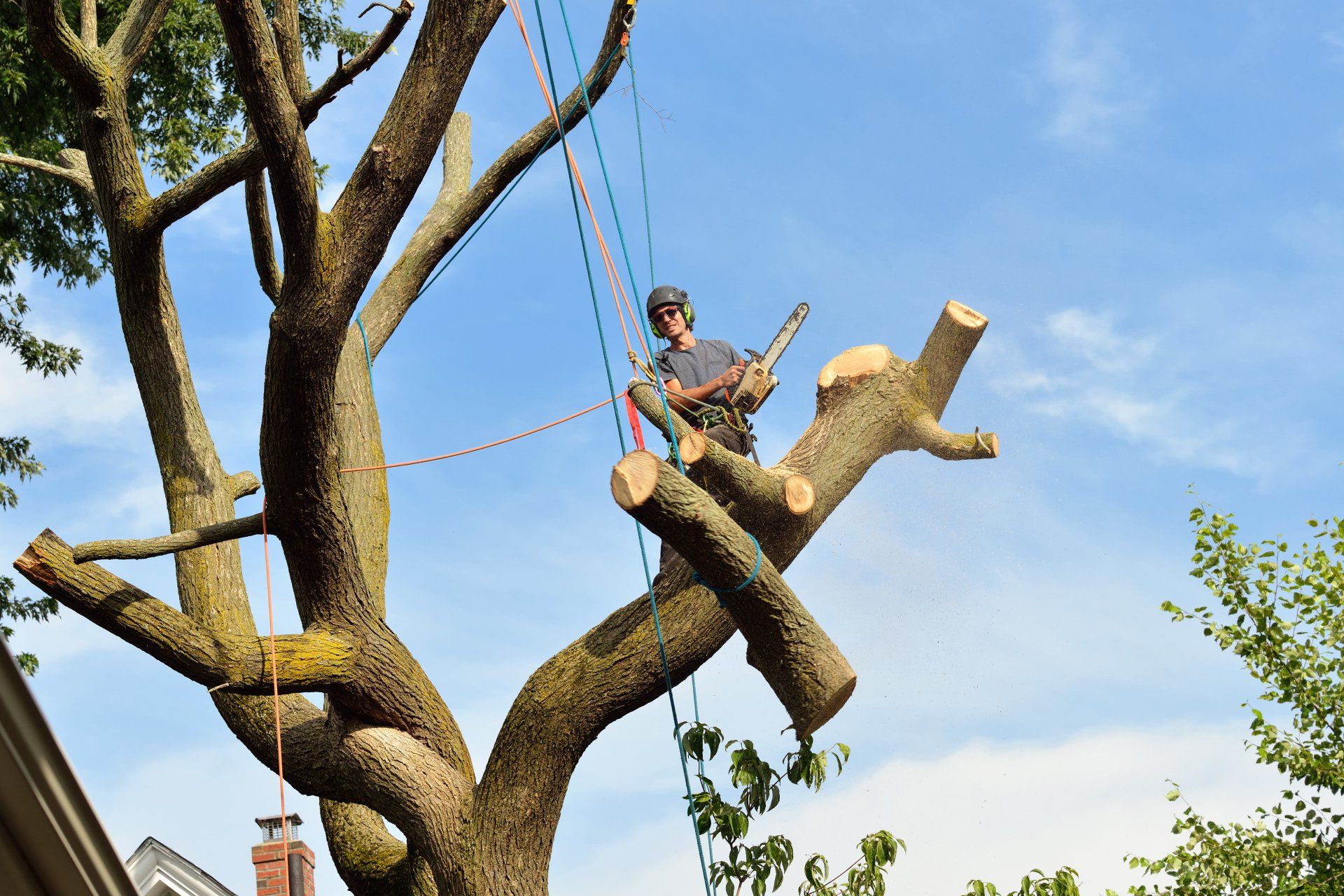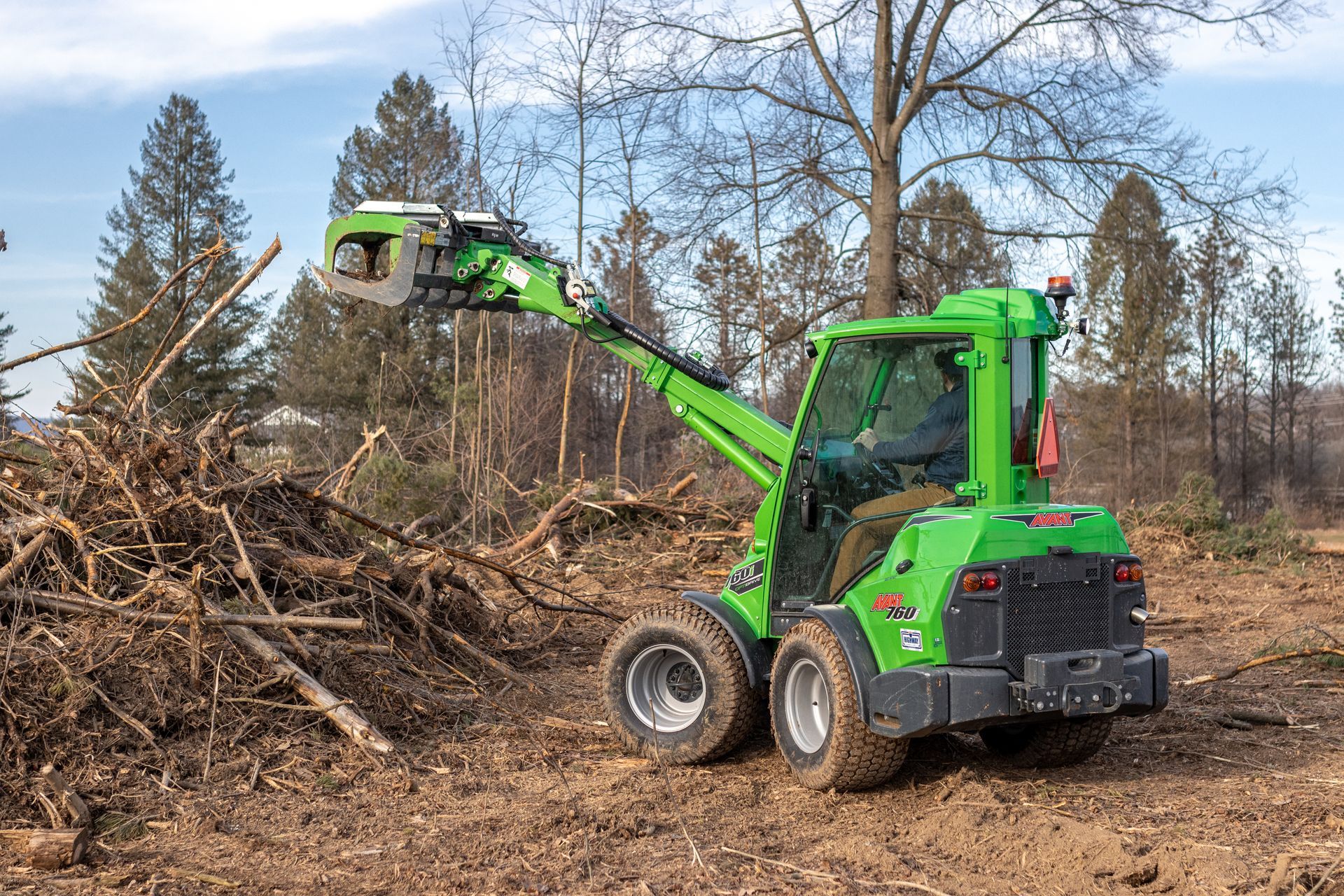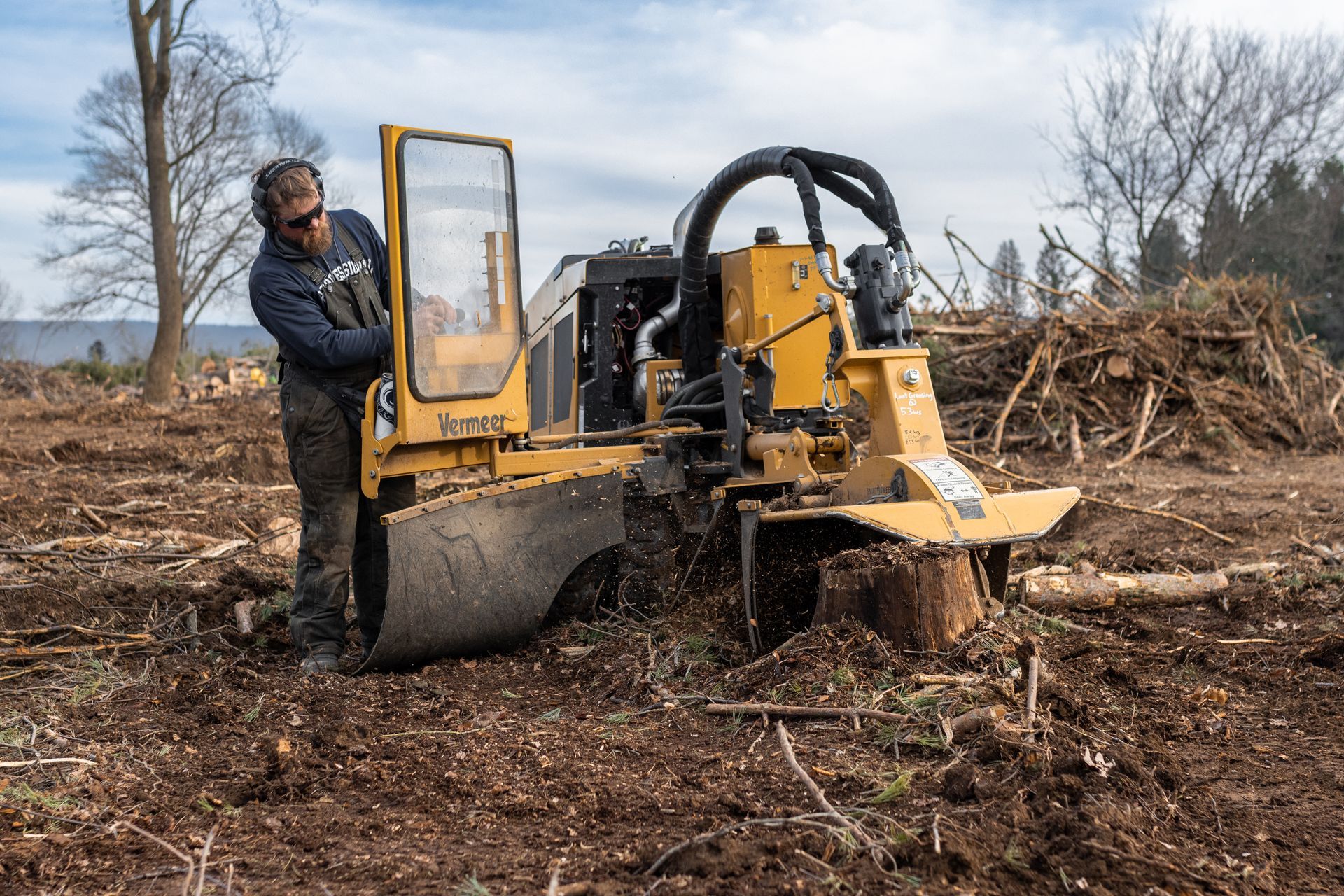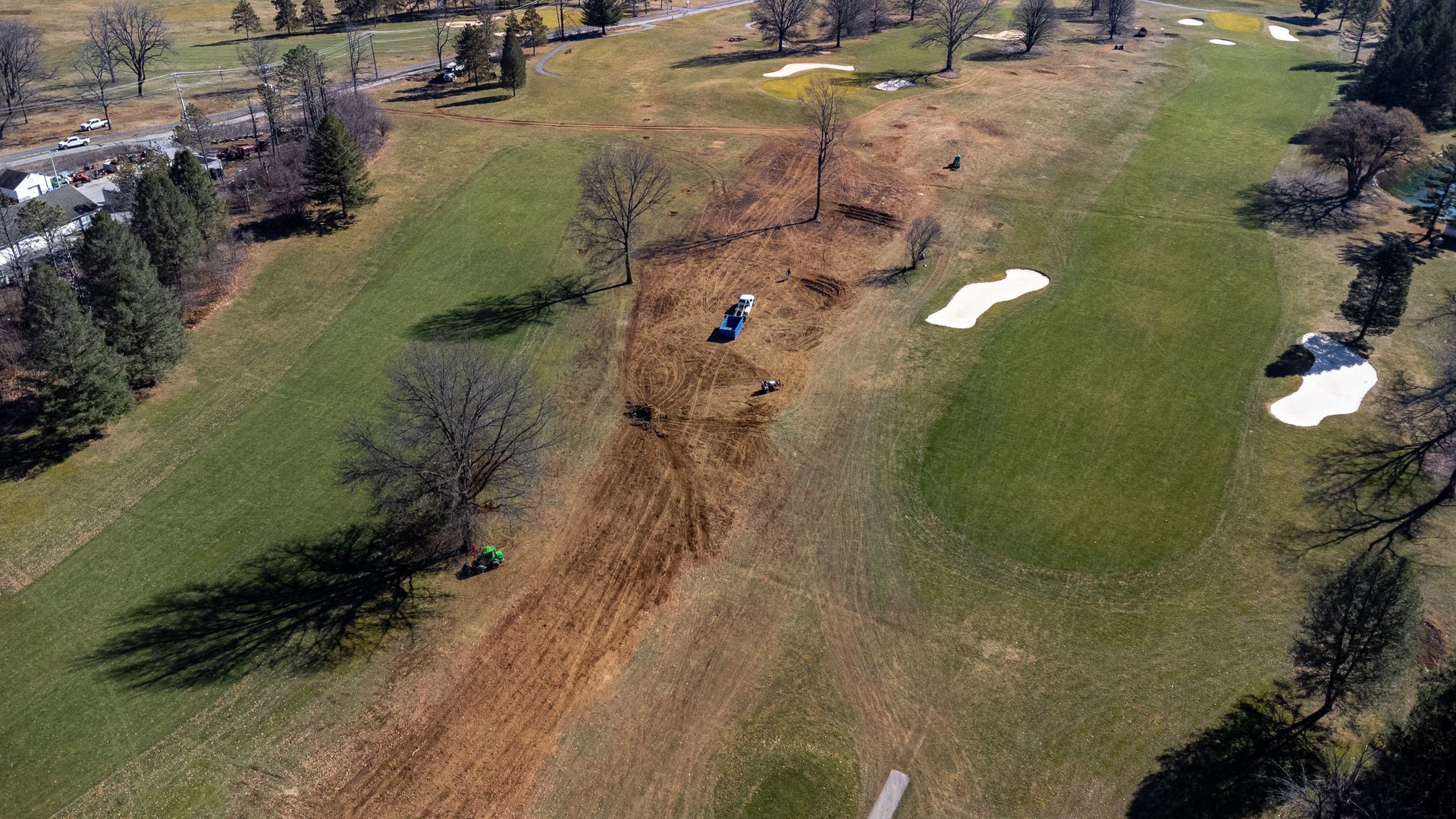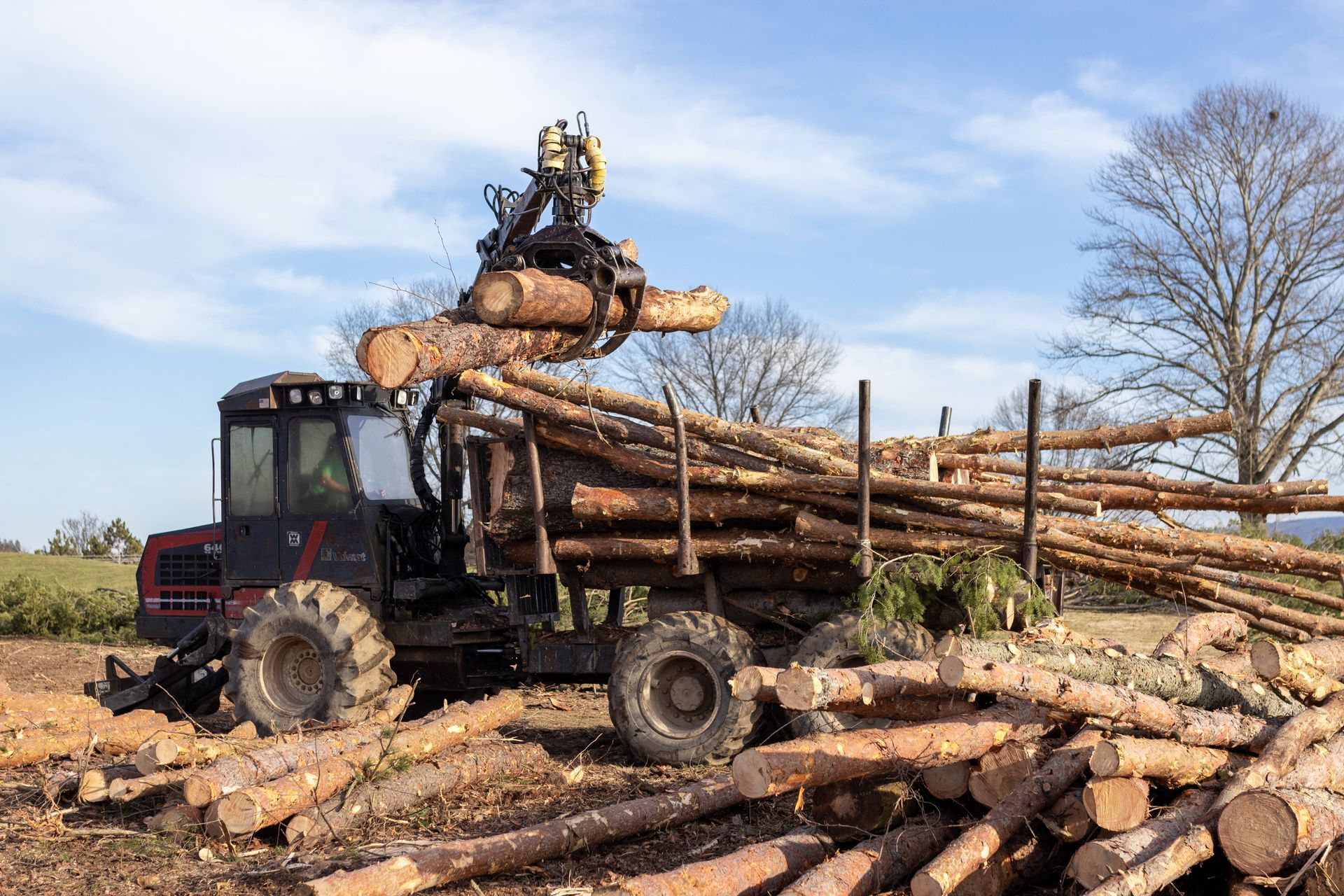Golf Course Stump Removal
Maintain the Beauty of Your Golf Course
Unsightly stumps can damage the beauty of your golf course landscaping and design. Because tree stumps are connected to the earth through complex root systems that may entwine with underground utility and power lines, removing them is a difficult and sometimes dangerous task. For your stump grinding needs, rely on the best stump removal specialists in the Pennsylvania, New York, Maryland, Washington DC, Virginia, and surrounding states.
We specialize in the cosmetic removal of tree stumps that prevents damage to surrounding lawn areas. Our detailed process includes staging the work area for safety, grinding the stump, and cleaning the site by removing wood chip debris. While we do offer additional soiling and seeding services, we can also leave the remaining mulch on site for your golf course's landscaping and design team.

“The Professional Stump Removal crew did a great job at our course. During our initial meeting, we toured the property together, and they gave us an idea of how many stumps we could reasonably expect them to grind in one day. They also suggested the order in which we should complete the stumps to ensure that the most important stumps were completed and that the process was as efficient as possible. They made excellent use of their time and exceeded our expectations. Overall, it was a great experience, and I plan to utilize their great service every year.”
TYLER BUTTS
Director of Grounds, Toftrees Golf Club
01
Identity Access Points
We identity various access points to and from the golf course. These access points are important for the preservation of the turf and the roads. Choosing efficient routes can reduce or eliminate damage to the course and road. By keeping the heaviest equipment isolated to the "rough" or areas that will be destroyed entirely during the renovation or grinding process. Lighter equipment with turf tires can perform the tasks in the high risk areas. Our damage reduction efforts can result in a huge savings to the course in terms of labor and material (soil, seed, hyrdo-mulch, starter fertilizer, etc.) once our job has been completed.
02
Create Action Plan
We usually start by removing the trees furthest away from our access point first. The process is performed in this order, because the more traveled the road, the worse the conditions, as the road/grass that you are traveling becomes more damaged you have a tendency to spread that damage by moving mud, dirt and debris attached to equipment tires around the course.
03
Felling The Trees
Typically we begin felling trees at this point. Felling the tree is the easiest and quickest part of the job, but is the least significant in terms of actual progress. Once a tree hits the ground, is when the real work begins. If I were to describe felling the tree as an overall percentage of removing a tree I would say it is no more than 5-10% of the overall project.
04
Processing Tree Debris
Processing the tree debris involves eliminating the material. The process includes chipping the brush and/or hauling it to a staging area. By processing this material you allow access to the logs. If the wood does not have any value this wood is processed (chipped or moved) as well. In certain situations we burn this material using a highly specialized tool called an Air Burner. This reduces the material volume to 1.5% of its original size/volume. Using the Air Burner 1000 yards will be converted into 15 yards of ash that can simply be mixed into the soil or hauled off-site in one dump truck load.
05
Log Processing
In the event that wood has value, we separate all of the large logs, loading them onto the forwarder. Once the logs are collected we place them in an area that is easily accessible for log truck to haul them to a saw mill or pulp processor. Learn more about this process in Step 9: Bonus Service.
06
Grind The Stump
After processing the tree you are left with a stump. We first identify the overall size of the grinding area. Typically we grind the stump (where it meets the earth) plus 1' to the left and 1' to the right. By grinding this larger area we eliminate the root flare. The root flare of a tree is not noticeable when it is underneath the canopy of a tree and is generally avoided by carts or foot traffic because of the tree's overarching presence. Once the tree is removed the root flare and roots are far more noticeable and hazardous. Roots are ground at customer request. We are able to grind as many or as few roots as suggested.
07
Removing Stump Debris
Once the stump has been ground you will be left with a mound of "stump mulch" in place of all previously existing stumps. This stump mulch varies in consistency based on size of the stump. The larger the stump, the greater the percentage of wood chips vs topsoil, and vis-a-versa. This material will decompose rapidly. In almost all cases you will want to remove 90% of this material leaving a 6-8" divot in place of the stump and refilling with topsoil. We typically collect this material and store on-site in a composting area to be used 5+ years down the road. Alternatively we haul off-site based on storage limitations of the course.
08
Final Clean Up
Our final step is to clean the course to the originally agreed upon specifications. These specifications vary by project. Some projects specify that all material is removed down to 1" in diameter, while other projects require that all material is removed. The project specifications are dependent upon budget, size of in house staff and time of year. A tool we often use for this final step is a landscape rake or a broom on a Ventrac Tractor equipped with turf tires. The old fashioned way (and sometimes still the best) is a simple rake and some elbow grease.
09
Bonus Service
Now that the project is nearly complete, we focus on the disposal of the material saved during the process. Any logs of the high value will be hauled off-site to a saw mill. The next standard of logs are sent to the pulp plant where it can be turned into paper. This is because pulp wood has a lower set of standards than a log that would be milled for lumber. Often neither of these options end in a lucrative financial exchange, but some money is generated. The biggest benefit is having 100's of thousands of pounds of material hauled off-site at no cost. Finally, the remaining wood chips are can be used onsite to line paths through the woods, given to members for free as a gesture of good will or simply hauled off-site to the nearest mulch producer. This wood chip material can be costly to have removed so ideally you find an onsite use for this material.
Common Questions
More questions? Call us at 814.883.9444.




